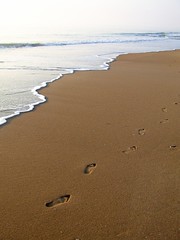
![]() Photo credit: Joshua Davis (jdavis.info)
Photo credit: Joshua Davis (jdavis.info)
Fly nonstop: Planes burn the most fuel on takeoff and landing. That means that a long haul flight that takes you straight to your destination emits less CO2 than short haul flights. For the same destination, a long haul flight may burn up to two-thirds less CO2 than short haul flights.
Use airport restrooms: Flushing an airplane toilet at 9,144 metres above the ground uses almost a quarter of a litre of fuel- enough to drive about 9,650 metres. So you should make sure that you use the airport’s restrooms before each flight.
Don’t fly at night: according to a study by the University of Reading, clouds created by contrails trap more heat in the atmosphere at night than they do during the day. Thus flights during the day are less harmful than flights at night, concerning global warming.
Cruising: Cruising allows you to bring a lot of people into an area, without creating the environmental footprint required to house and feed them. However, large cruise ships could still be harmful to the environment if they are not new generation ships- with technology complying with the newly established strict standards, guaranteeing energy efficiency and effective waste management- and if they cruise in ports located near coral or other sensitive marine life. Thus, you should choose to travel on small cruise ships which carry less than 100 passengers. They are generally less threatening to fragile environments.
On the other hand, sailboats are the best way to go, if they are actually under sail. In general, there is room for improvement in this industry in making sure that small boats take care of wastewater responsibly.
Recommended Comments
Join the conversation
You can post now and register later. If you have an account, sign in now to post with your account.